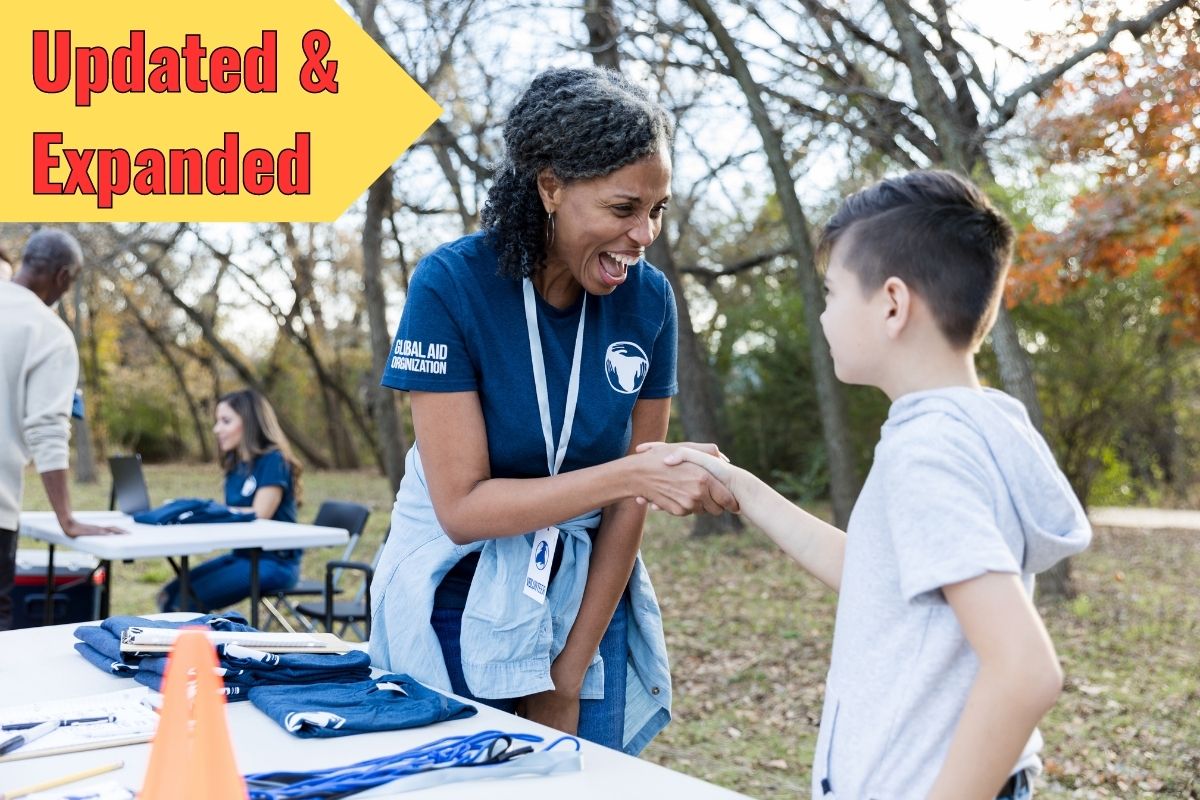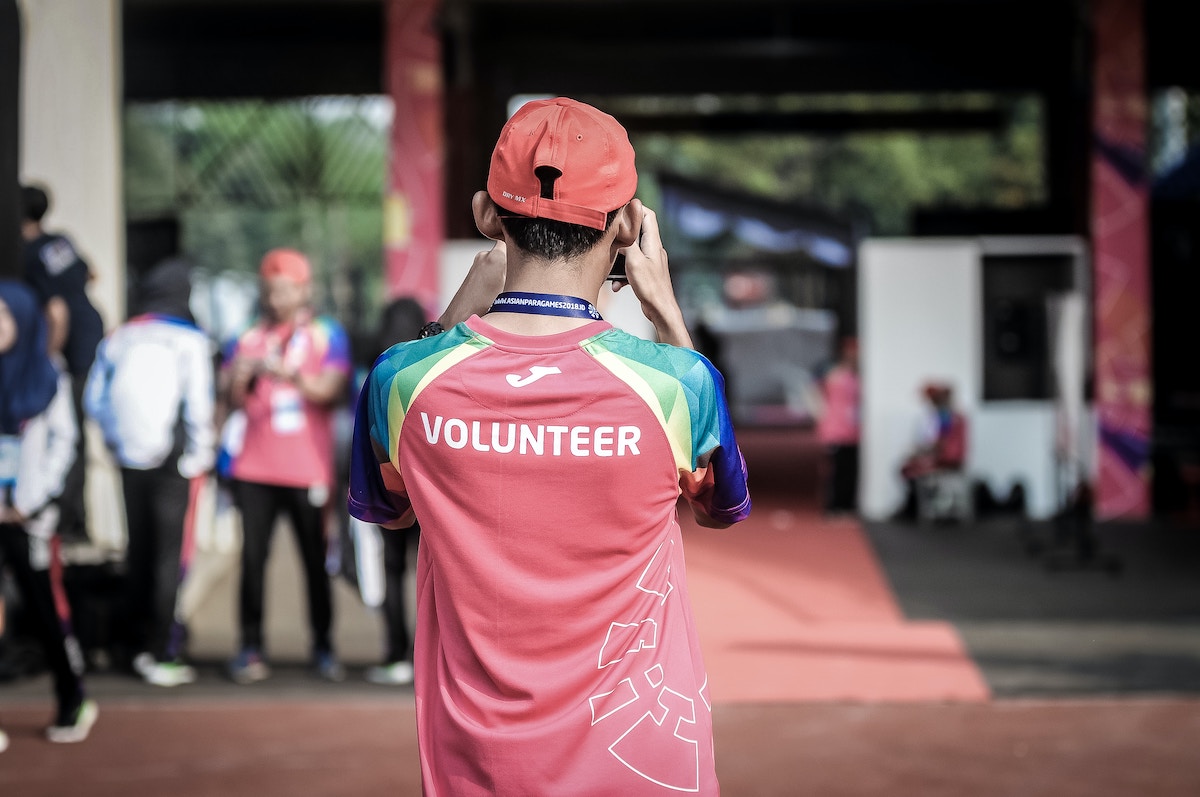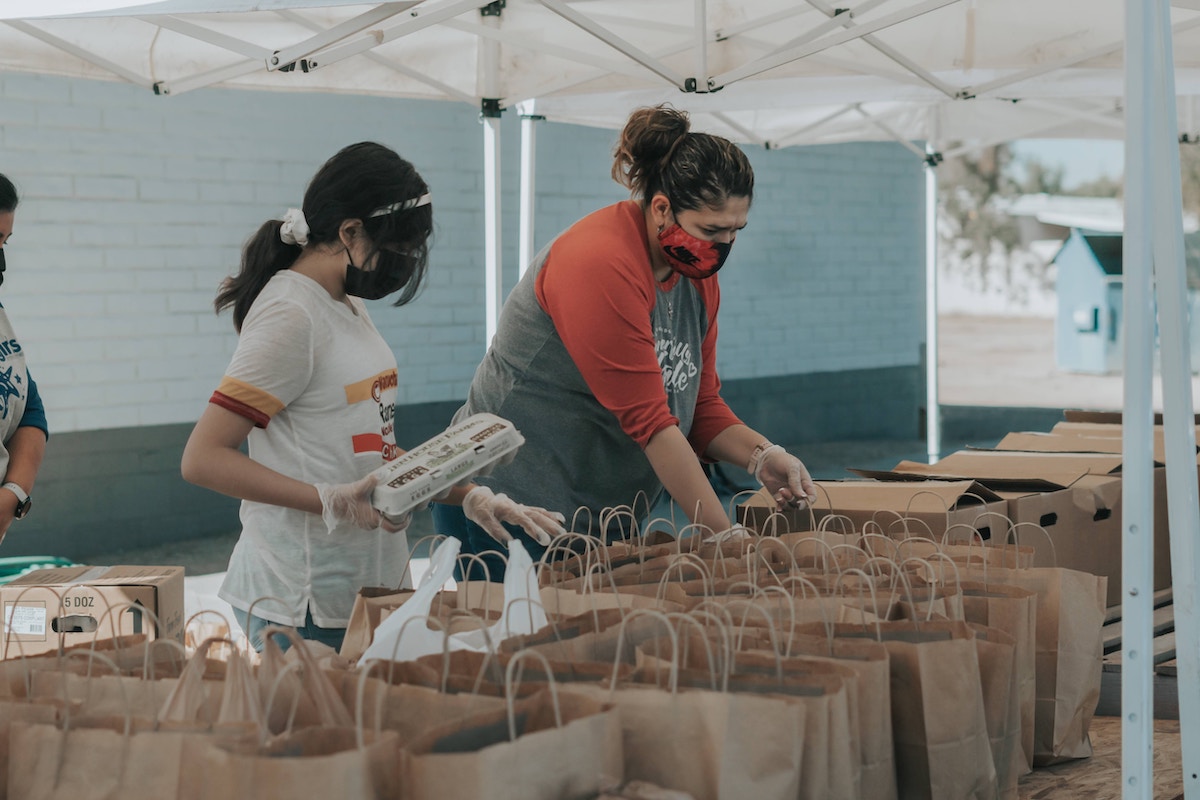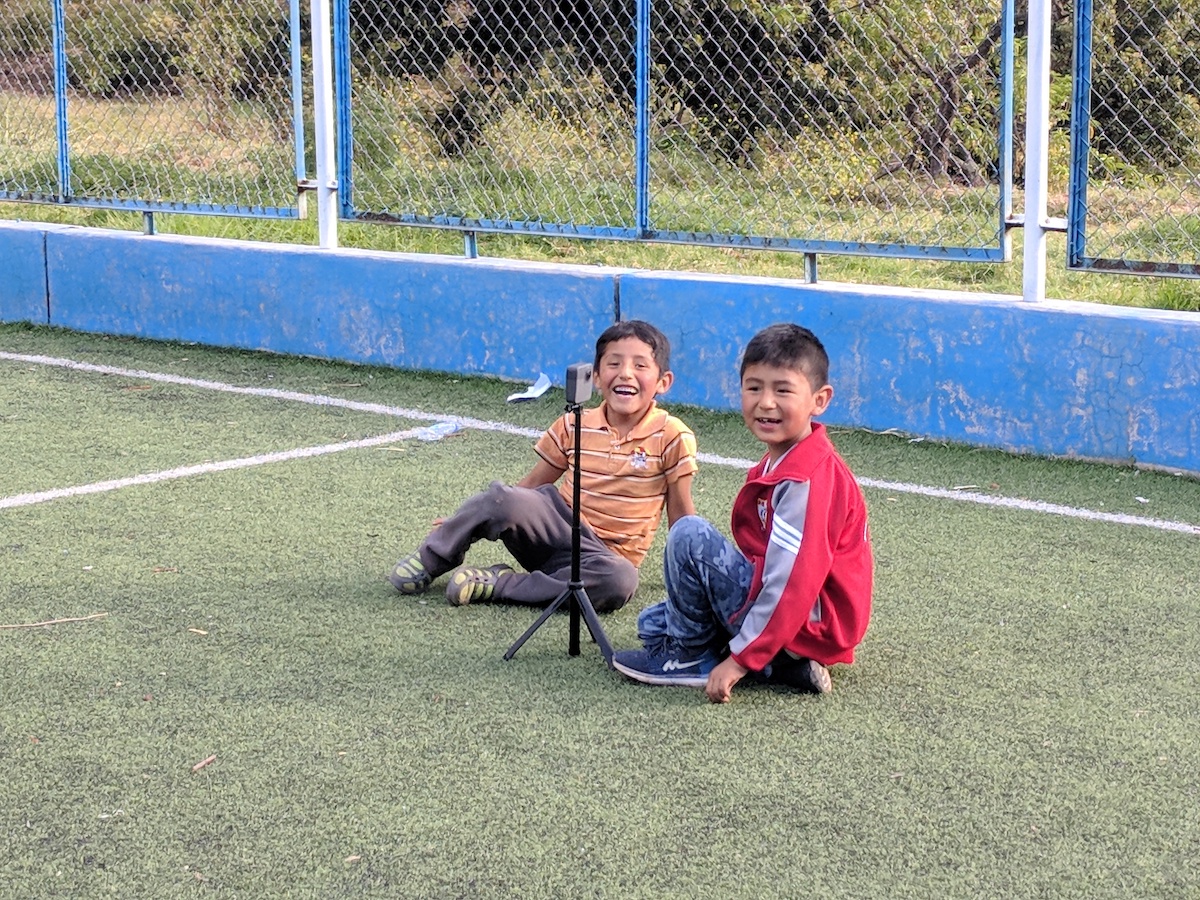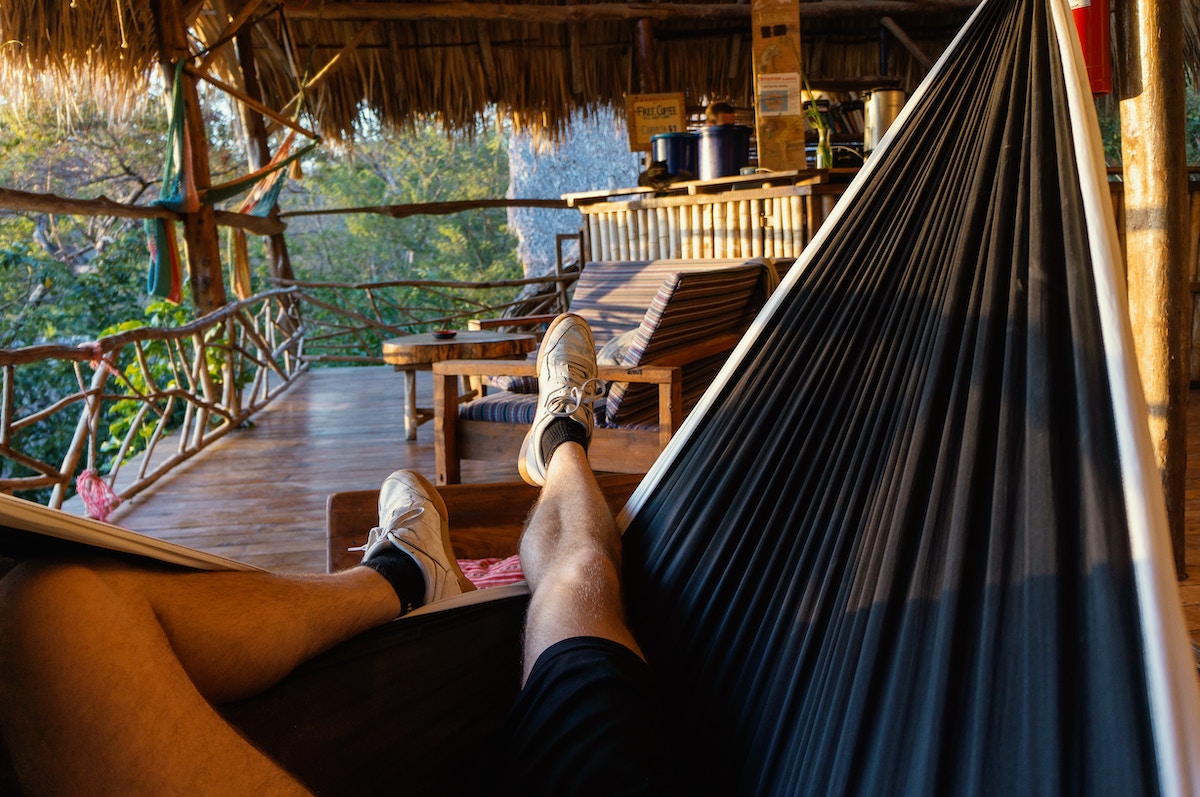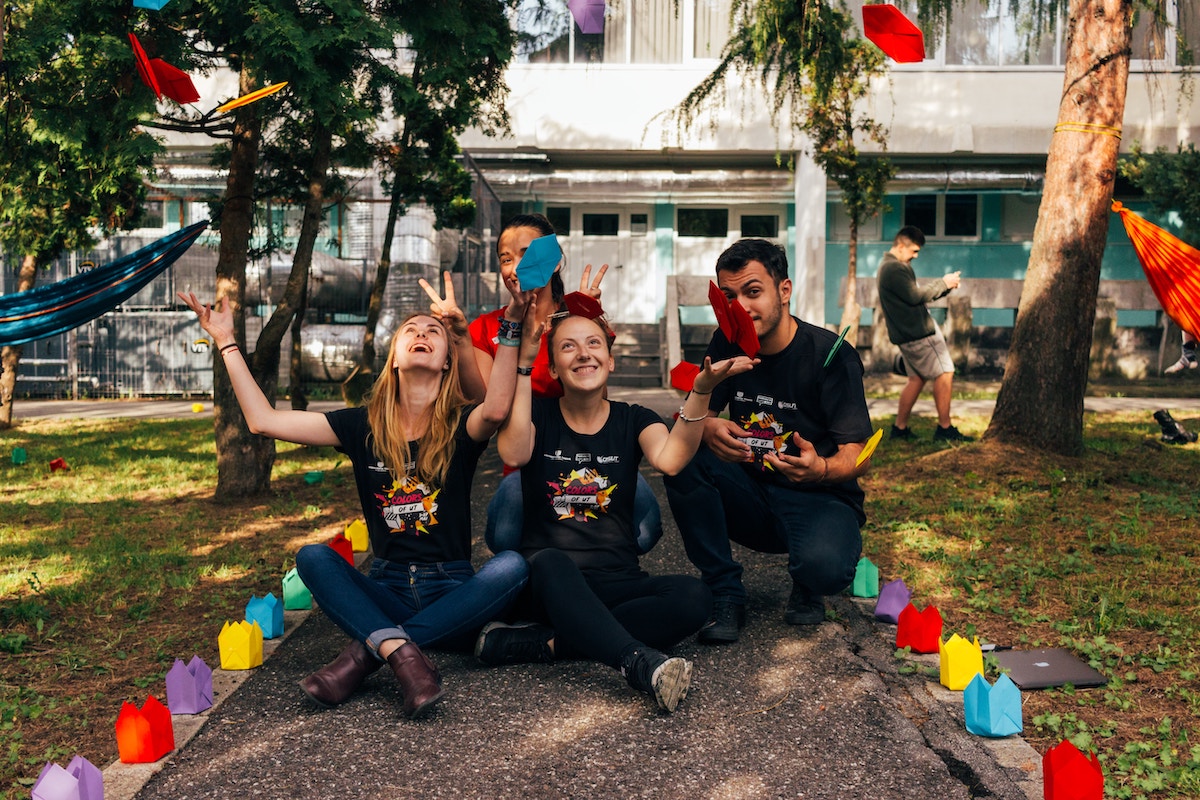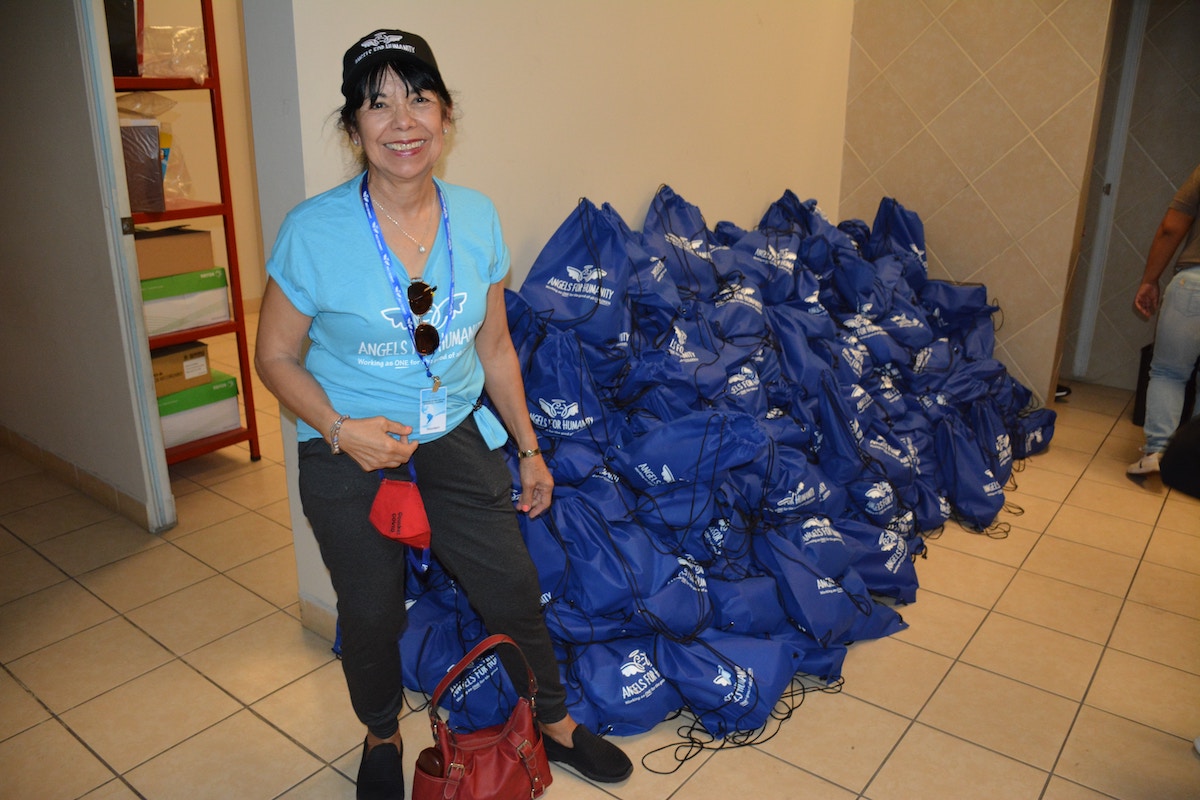By: Sarah Stone
Ready to travel the world and do good? Read this comprehensive guide to ethical volunteering abroad so that you have the tools needed to find the right organization and make the best impact you can.
Volunteering abroad is a way to explore the world while helping a community in need. Trips might last from a few days all the way to a year or more, and can be close to your home or on another continent. You can travel solo, in a group, with your family, or as a couple, and experiences are available for a wide range of backgrounds, from teen trips to professional career breaks.
As a volunteer traveler, you’ll live in and work with a community you may not have known before, but that you’ll never forget once you return home. Your involvement benefits a dedicated, community based organization in need of an extra hand—and you’ll build skills and knowledge that can cross over into your career, education, or in day-to-day life.
Regardless of your experience, age, or physical fitness, there’s a volunteering abroad project for you—one that’s mutually beneficial for you, the organization, and your host community.
Volunteer travel buzzwords—defined!
- Photo by ray sangga kusuma on Unsplash
While choosing an ethical volunteering abroad program, you’ll come across some terms that often are used interchangeably. This guide will focus primarily on volunteer vacations and long-term service, but let’s take a look at the more common types of travel associated with these two, and note the differences.
Volunteer vacation or short-term volunteering abroad
These short-term programs last as long as standard vacations, often cost about the same (we’ll talk about trip costs shortly), and—of course—incorporate a service project. Overall, these programs are structured to engage many short-term volunteers over a long period, meaning you likely won’t see immediate results of your work.
Popular volunteer vacations can include renovation and beautification, trail maintenance and beach cleanup, and research and information gathering.
Long-term volunteering abroad
Long-term volunteering abroad includes those programs that last six months or longer. Many are free of charge, and might even provide a small stipend for your work, usually comparable to average income within your host community. Common programs include agriculture, business development, childcare, education, and healthcare.
Most long-term service organizations ask that their volunteers have background experience or education in their project area. If you don’t have much experience—for example, if you’re just out of college—the application process may take a little longer and be more involved.
Long-term service is similar to a job placement overseas; since the host organization covers your housing, food, and even medical care for several months, they want to know that you’re the right person for the project. One popular example of long-term service is the Peace Corps—trained volunteers are placed in communities around the world that request them, partnered with locals who mirror their skills and can train and guide them, and stay for 27 months to help further the goals of important community programs.
Philanthropic travel
This term often is used interchangeably with “volunteer vacation,” but it’s not quite the same thing; philanthropic travel includes a monetary donation to a charity or community program, rather than a hands-on service project. You can usually find philanthropic travel opportunities through hotels, cruises, and travel agencies, which can offer cultural outings and activities with a donation to a sponsored program.
Gap year
This is exactly how it sounds: it’s time to travel, explore, learn, and even volunteer if you choose. Gap years usually are taken between high school and the first year of university—this time can be used to reassess your current path, build a new one, expand on your current skills, meet new friends, and try your hand at living independently. Volunteering abroad projects often are incorporated into gap years, but they are not always the priority.
Career break
This is kind of like a gap year for professionals—a career break allows you to take some time off from work, whether it’s several weeks, a few months, or even a year. A career break allows you to recharge, reassess your career path and goals, and forge a new one if you choose. As with a gap year, you might volunteer during your career break but it’s not always a priority.
Related: Burnt Out? Consider Taking a Sabbatical from Work
Service-learning
Service-learning combines volunteerism and education. Many service-learning programs are organized by specialized study abroad programs or by a school. Usually programs take place during a spring, winter, or summer break for high school students or during a regular semester for college students. Projects integrate field experience with the classroom to identify key issues in a program area, and then hash out ways to address those concerns.
Service-learning can be applied to college credit or as an internship for students interested in pursuing that field of work. For example, you might collect data on marine life in a protected area, and then later report on and study ways to preserve endangered species and their habitats.
Study abroad
Study abroad is most popular among university students, though it also is certainly available at the high school level. While universities often organize study abroad programs during a regular semester, high school students often go this route during summer or winter break.
Study abroad programs focus on cultural immersion and education—those that incorporate a volunteering abroad component generally fall under the category of service-learning. Study abroad programs usually last from a few weeks to a year, and can include cultural outings and tours, special projects, and even part-time employment or internships.
Intern abroad
Professional development opportunities abroad, usually in the form of internships, are a wonderful choice for students and young professionals who wish to gain hands-on experience in their chosen career, but who may have trouble finding those opportunities locally. Popular internships include medical and healthcare, business development and NGO support, and law and legal work. Many intern abroad programs can be customized to your needs, and can be taken for course credit.
Cultural immersion
This can be described as a learning vacation where you might stay with a host family, eat local food, and observe host country customs. These trips can include a volunteering aspect, but community service is not always the priority. Cultural immersion trips are designed for an interactive, educational purpose for those interested in learning more about the host community from a local’s perspective, rather than from a tourist’s view.
Language immersion
Language immersion programs abroad are created for those who not only want to learn a foreign language, but to understand it fluently. You’ll travel to a country where that language is predominantly spoken, take intensive language learning courses, and learn to navigate your way through day-to-day interactions as though you were a local. Volunteer service programs can be included with language immersion, but aren’t usually the priority.
Work abroad
Work abroad trips are ones where you pursue a job in an international destination. Popular work abroad opportunities include farm work, au pair, teaching, and hospitality and tourism. You can expect to earn a local wage, and will usually stay a few months or a year or longer.
Why should you volunteer abroad?
- Photo by Ismael Paramo on Unsplash
By taking part in an ethical volunteering abroad project, you’ll benefit the community, the volunteer organization, and yourself.
Impact on the community
The community you’ll work with needs resources and assistance from volunteers worldwide. Whether they want help on developing a new project, or just an extra hand with an ongoing program, the community benefits from the efforts of dedicated volunteers.
Sustainable volunteering abroad projects actively engage locals, creating jobs and providing valuable career training and experience for those who need it. These programs also contribute funding to the community through tourism and donations.
Impact on the organization
Your involvement in a volunteer abroad project promotes the host organization’s ongoing efforts outside of and within their community. Program fees and donations enhance marketing, volunteer recruitment and retention, and staff support.
As a volunteer, you’ll have an individual placement, such as teaching or providing healthcare services, but you also will likely help with daily tasks, like cooking, and cleaning—something that benefits everyone involved. And when you return home, you might just convince others to work with or donate to the host group as well!
Impact on the volunteer
International volunteering abroad builds upon your existing abilities and trains you in new ones. You’ll gain measurable skills, like a new language, or soft skills, such as self-confidence. Your service also may enhance your resume, expand your career, and open you up to scholarships and financial aid to further your education. You may even become more involved in community projects at home or continue with volunteer programs worldwide.
Why should you pay to volunteer abroad?
- Photo by Josh Appel on Unsplash
Many prospective volunteers cite cost as the most important factor in choosing the trips that they go on. Why should you pay if you’re already giving your time? If one group is less expensive than the other, does that mean it’s not as good? Or if a trip is more expensive, does that mean it’s a rip-off?
To answer the first question, some volunteer organizations are not-for-profit, and only receive funding through donations, grants, and memberships. Others are small businesses that do community work, and rely on tourism dollars to keep that work going. Your placement fee helps to cover:
- Operational expenses: This might cover facility rent and maintenance, employee stipends, and permits.
- Host families and local staff: A portion of the project cost goes toward those who house and feed you, and make sure that you have the training and support you need on the project.
- Volunteer expenses: This can include orientation and training, airport pickup and drop-off, handbooks and manuals, and project supplies and tools (such as construction materials, teaching aids, and so on).
But why do some organizations charge only $100 per week, while others charge upwards of $4,000 for the same? Well, it’s all in the type of experience you want and what’s offered with that program. To start, there are two main types of volunteer organizations you can work with, which can change costs drastically:
Volunteering abroad placement groups
If you’ve started the volunteer abroad program search online, you might be familiar with placement groups—they’re the larger organizations referenced time and again in articles about where to volunteer worldwide. They can be likened to travel agencies, but with a focus on volunteerism.
Placement organizations partner with local, community based groups that don’t have the resources for global marketing and recruitment. They find volunteers, guide them through the pre-departure process, provide orientation and training, and perform regular site visits to in-country staff that support the participants.
Many of these organizations provide extra benefits for their volunteers, like cultural immersion activities, presentations, adventure tours, and language classes. As a result, they’re often more expensive than host groups.
Volunteer abroad host groups
These are the smaller, local organizations that volunteers are placed with when they participate in an international service project. Placement organizations provide the volunteers for host groups.
If you volunteer directly with a host group, rather than with a placement organization, you still will receive in-country staff support from locals. However, you likely won’t receive some of the added benefits that placement groups give, such as guided tours or presentations, or even additional support, and you likely will have to take on a lot more of the trip planning yourself.
Some volunteers prefer this route, as they can determine their own arrival and departure timeline, find their own housing (often this is provided by the host group, but it’s not necessarily required for the volunteer), and in most cases, save more on program fees than their counterparts working through placement groups.
Costs also vary widely depending on the type of program you’re pursuing. For example, if you volunteer with an after-school sports program, chances are the monetary investment in that program overall is minimal; volunteers need little training, equipment is generally donated or purchased at a low cost, and the program usually takes place at a school, community center, or church. Conversely, if you sign up for a marine research program that provides divemaster certification, costs are significantly higher: equipment, training (both dive training and research gathering and interpretation training), staff, travel, and other necessities require a larger investment.
A few notes on cultural imperialism and sustainability
- Image courtesy of the author
Before jumping in with the first volunteering abroad organization that piques your interest, do your research to ensure they’re conducting positive, successful, and sustainable work with their host community.
We’ve all heard the dangers of groups that parachute in to a host country while neglecting existing work being accomplished there, and doing instead what they think the community needs. This doesn’t usually happen with negative intent in mind. In fact, many unsustainable organizations and initiatives are founded by volunteers who were inspired by a trip abroad, and wanted to find a way to encourage others to support that cause; but rather than funneling support to an existing, local program, they create their own NGOs without understanding or appreciating how this dilutes development efforts. While their intentions might be good, their actions are not.
Oftentimes when a host organization develops a partnership with a larger, international placement group, it’s because the community doesn’t have sufficient resources and assistance available at its disposal. Reputable placement organizations pride themselves on providing local solutions to local issues—building partnerships with host country groups allows them to avoid the cultural imperialism issue and instead focus on problems already identified by a community, and to provide additional support (e.g., funding or volunteers) to existing initiatives.
While choosing an ethical volunteering abroad program to work with, ask yourself whether they have a long-term, positive effect on the host community. In what year was the organization established, and how long has it worked with that particular host community? Do they have project reports available? Do they have recognition for their efforts, or partnerships with well-known or regulatory organizations and agencies? Speak with staff, read reviews from past volunteers, and browse articles and blog posts about the organization before signing up.
Are you ready to volunteer abroad?
- Photo by Daniel Hooper on Unsplash
When choosing a volunteer abroad project, consider your expectations—what do you want to get out of the program, what will you give in return?
Do you want to emphasize ‘volunteer’ or ‘vacation’?
Knowing this from the start will make all the difference in planning a positive travel experience. If you’d like ample time to explore the host community and surrounding areas, you might want to sign up for a less intense project, or even one with built-in excursions and tours.
Get in touch with your volunteer program coordinator to see what the typical travel experience is like. Ask how much free time you will have, how physically demanding the project will be, and whether outings or weekend travel are feasible.
Why do you want to go?
Are you passionate about a particular cause? Do you want to help others with a project they find worthwhile? Volunteering abroad makes you feel great for a reason: you help a community in need, learn more about the host country, and meet like-minded friends along the way.
Keep in mind that ethical volunteer abroad programs are long-term solutions accomplished through the help of many participants over time. Don’t expect to see the impact of your work overnight or by the end of the week, or even at all unless you keep up-to-date with your host organization’s activities over the long-term. While your assistance is very important, remember that you’re part of the bigger picture, and try not to become discouraged if you don’t see the results of your efforts!
What do you want to do?
There are many types of work you can accomplish on a volunteer abroad program, from animal care, to trail building, to youth development. Just make sure you know exactly what tasks you’ll help with before jumping in—for example, if you work with a women’s group that sells handmade jewelry, make sure you know your role in the project, whether it’s marketing, business development, or even assisting with making the jewelry yourself.
Also, be sure the work is something that truly interests you—if you’d like to teach abroad, consider the age group and subject you’d like to focus on before pursuing training and certifications in it.
Finally, think about your optimum level of involvement in the project, and whether you prefer a variety of tasks or a strong focus on one goal. Knowing this beforehand will make a difference in how much you enjoy the work and how you might further the organization’s goals.
Do you agree with their mission?
Learn about the volunteer group’s history, the projects they’ve worked on, and how they’ve implemented those projects. Make sure that their mission and type of work align with your goals and interests.
If you’re looking at volunteering abroad through a placement group, check out the host partner you’ll work with directly; if you’re unsure of which group they work with in the host country, check with a volunteer coordinator. If they’re cagey about who they’re working with locally, I don’t recommend signing on with them—the goal should be to help further community projects along, and not to make the most money possible through placing the greatest number of volunteers as possible.
Where do you want to go?
While searching for a volunteer abroad project, you’ll probably start with where you’d like to go—such as a region, like Southeast Asia, or a specific country, like Thailand. You might even have a certain area of that country in mind, which will help narrow down the search even more. Before signing up, think about the climate, what season it will be when you get there, what kind of terrain the area has, and whether the project is in a rural or urban location.
You also should familiarize yourself with the culture of the host country. For example, are you comfortable with gender roles there? How about the way you will be expected to dress? What language do they speak, and do you have any background in it? Some volunteer groups ask their participants to have some host country language ability, as it might be the only language spoken by local staff.
Knowing as much as you can before you travel will better prepare you to acclimate to your new neighbors, and will help to prevent some of the effects of culture shock later.
What are you able to do?
Even if you have physical limitations, there are many projects that you can choose from such as animal care, business development, or teaching. If you find an organization you’d like to work with, get in touch with them to see what’s open to you!
If you are physically capable, you’ll find that many volunteering abroad projects will get you in shape—but you shouldn’t have to push yourself beyond your limits. Check with the host group and with a medical professional to see what’s expected of volunteers versus what you’re capable of doing.
Lastly, consider what you’re good at and what skills you can improve. If a group requires an intermediate level of Spanish language ability, be honest with yourself: does that describe you? There might only be Spanish speakers at the project site, and you don’t want to be completely lost when you get there, as this will slow down the project efforts and frustrate both you and the local team. If, on the other hand, they accept English speakers and offer Spanish language classes, then go for it! Not only will you help an underserved community, but you also will learn a new skill.
How much time do you have?
One thing to be mindful of while planning an ethical volunteer abroad trip is travel time. If you have a week to give, it might be best to find an opportunity close to home; air travel and in-country transportation can take quite a while, even without accounting for delays.
If you’re interested in a long-term program, then this might be a great way to relocate temporarily while building new skills and expanding on ones you already have. Some travelers have even bounced from one volunteering abroad program to the next, staying a few weeks at each project site.
Another option is a week-to-week program. If you have a summer to give but you’re unsure about taking the whole time to volunteer, then this will give you flexibility to work for as long as you’re comfortable. Start with a one- or two-week commitment, and then depending on how engaging or beneficial the project is, extend the stay for however long you’d like.
What kind of support will you have?
While your overseas volunteering group should prepare you adequately before departure, you also will need onsite support. Volunteer coordinators or staff at the project site will guide you through your training and daily activities, and help you become acclimated to your host community.
Check with your volunteer organization on whether you should bring items like a first aid kit or over-the-counter medications for stomach problems or pain relief. They might keep these at the project site in case a participant has a non-serious injury or falls ill with a 24-hour stomach bug.
Finally, ask your volunteer coordinator what plan the organization has in place for unexpected or unlikely emergencies, such as a major medical issue, political turmoil, or a natural disaster. Be sure you know where your home country’s closest embassy is located, and how to get there if needed.
Who will you work with?
There may be some busier seasons than others on your volunteer abroad project; for example, organizations that work with sea turtles often are much more active in the summer and early fall, which is nesting and hatching season. Depending on when you go, there may be many volunteers on the project, or you may be the only one.
Some organizations attract certain age groups, nationalities, or people with specific education or career backgrounds. Check with your group to see who usually works with them—and even whether you can get in touch with your fellow volunteers beforehand.
What do former volunteers say?
Some overseas volunteering organizations have alumni groups, fan pages, and other ways to connect potential, current, and former volunteers. If you can’t find one, contact a coordinator to see if they might get you in touch with alumni or current volunteers you might work with on the project.
Finally, browse articles, blog entries, or other reviews of or stories about the volunteer organization. Remember, though, that online reviews of any product or service often can be extremely biased one way or the other (or even posted by the organization itself), so use your best judgment in your research!
Where can you go on an overseas volunteer program?
- Photo by Philip Myrtorp on Unsplash
International volunteer abroad projects can range from business development in an urban area, to marine animal research in the middle of the ocean, to invasive plant removal along a jungle trail, and everything in between. There are service opportunities in just about every country worldwide; it’s up to you to figure out where you want to go!
What can you do on a volunteer abroad trip?
Most overseas volunteer programs can be broken down into the following categories:
- Administration: Daily business tasks, such as greeting visitors, filing paperwork, or other office duties.
- Agriculture: Planting crops, harvesting seeds, assisting with farm work.
- Animals: Observing and researching wildlife, caring for animals within a reserve, cleaning pens and other habitats.
- Arts: Leading an art class for children, painting a mural on a community building, crafting jewelry with a women’s group.
- Business development: Creating a business plan, advising on best practices, brainstorming marketing material design and dissemination.
- Community development: Implementing a community-wide fundraiser, constructing a playground for local youth, installing solar panels on public buildings.
- Children: Caring for small children whose parents are working, assisting in a youth center, coaching a sports team.
- Construction: Building houses for low-income families, repairing damaged structures.
- Disaster relief: Responding to natural or manmade disasters on an immediate or ongoing basis, including supply delivery, medical care, or temporary shelter construction.
- Education: Teaching English to a primary school class, teaching job skills to adults.
- Environmental conservation: Clearing trash and other debris from a beach, educating others about environmental protection issues.
- Fundraising and marketing: Designing program materials, soliciting donations from interested individuals, educating the public about the organization’s mission.
- Healthcare or medical care: Providing ongoing medical care in a community clinic, giving first aid to injured people, assisting with a dental camp.
- HIV/AIDS: Counseling patients, providing healthcare for HIV/AIDS populations, educating locals about HIV/AIDS.
- Human rights: Advocating for underserved or underrepresented populations, educating others about human rights issues.
- Research: Tracking wildlife movement and activities, noting plant species in an area, collecting oral histories from community members.
- Social work: Distributing food and other supplies to low-income residents, organizing after-school activities for at-risk youth.
- Special needs: Organizing outings for physically challenged individuals, assisting in a classroom for mentally handicapped children.
- Trail work: Clearing non-native plant species, mapping new trails, rerouting damaged trails.
- Veterinary care: Assisting with sick or injured animals, rehabilitating wildlife for release.
- Women’s groups: Advising on a business plan for female entrepreneurs, advocating for women’s rights, providing job training for young women.
With most volunteer abroad projects, participants also assist with daily tasks, like cooking, cleaning, and other light work unrelated to their core project. While you might sign up to teach English, you shouldn’t be surprised to help on odd jobs as well!
Where you’ll stay while volunteering abroad
- Photo by Tobias Tullius on Unsplash
Depending on the type of project, you’ll have several options for housing. Most overseas volunteer organizations offer some type of accommodation, which can range from high-end hotels to backcountry campgrounds.
Hotel
If you travel with a luxury group, then you’ll likely stay in a hotel. You also can arrange a hotel on your own if housing isn’t provided by the volunteer organization, or if you don’t want to stay in their current accommodations.
If you choose to stay in a hotel over the host group’s housing, keep in mind that your organization may not provide transportation to and from the project site, and that you will need to cover your own housing costs separately, instead of as part of the program fee. Depending on how long and where you stay, a hotel may become expensive, so be sure you budget accordingly.
Shared house
This can range from a small hut, to a standard house, to a rustic cabin, to a dormitory. In most cases, you’ll have roommates, though arrangements occasionally can be made to have a private room for an additional fee; this usually is only available during slow seasons when fewer volunteers are expected at the project site. You also may be able to request gender-specific housing, if it’s not already provided.
Host family
This is one of the most popular options for volunteer travelers. You might be the only guest staying with your host family, or you might share this space with fellow volunteers as roommates. Your host family usually will provide your meals, wash your clothes, and help you become acquainted with life in their community—many volunteers keep in touch with their host families long after the project is complete and they’ve returned home.
Couchsurfing
If you have a friend in your host country, or if you’re open to staying with a kind stranger while traveling, couchsurfing is a fantastic option—basically you’ll have a place to crash and that’s it. Your couchsurfing buddy provides a place for you to sleep while you work on the volunteer project, and it’s up to them as to whether they’ll provide anything beyond a room (as opposed to a host family setup, where usually you may expect meals and other services to be provided). This is especially helpful if the program is a short-term one, in an urban or an expensive area, or if the host organization does not provide accommodations for its volunteers.
Hostel
Some volunteer organizations offer hostel accommodation, or at least have recommendations for ones in the area. Depending on your travel style and the program you sign up with, this may be an inexpensive alternative to their provided housing, and can be a great way to meet other travelers.
Campground
Some international volunteer programs offer the option of staying on a campground—or this might even be the only accommodation they can provide. Campgrounds can range from rugged backcountry to a more modern site with running water or electricity, and depending on the time of year, it can be rainy and hot or extremely cold and dry.
Volunteers usually are asked to bring their own camping equipment, or at least some of the supplies. Be sure you know well in advance what you’re expected to take on the project, as it can quickly eat through your budget.
Your timeline for planning an overseas volunteer trip
- Photo by Glenn Carstens-Peters on Unsplash
Most overseas volunteer programs ask that you have your application complete several months ahead of time, and your first deposit secured at least six weeks before your prospective departure date. This is because they’ll need time to arrange a spot on the project you want—volunteer groups, particularly the larger ones, sometimes receive more requests than they can place. They also need to secure your housing, as many have limited accommodation with host families or in shared rooms.
You also will need time to get your passport if you don’t have one, your visa if you need one, and immunizations that might be required for entry into your host country. You also should have ample time to narrow down your budget, flights, travel insurance, and project supplies.
Four months out
If you don’t have a passport, then you should apply for one now—the process can take quite some time, and you should have it completed well before your prospective travel dates, regardless of whether you know which volunteer abroad program you’d like to work with. If your passport will expire within six months of your travels, you should have it renewed; many countries will deny entry to visitors whose passports will expire soon.
You also should start researching potential volunteering abroad programs and figuring out where you’d like to go, what you’d like to do, and how much funding you’ll need for the trip. Take your airline ticket into account as well; this can cost as much as or more than the program placement, and almost never is included in the quoted fee from your volunteer organization.
Three months out
If you’ve found a service program that interests you, get in touch with them to learn more. Find a few backup organizations as well, in case your first choice can’t place you or if you change your mind. Be sure to check the application and deposit deadlines—many groups advise submitting your application several months in advance to ensure placement.
Start researching your host country, and if possible, the host community. Familiarize yourself with the weather for that time of year, the local customs, and the history of the region. This will help you decide if that’s really where you want to go, and it’ll make adjustment a little less intense once you get there.
Two months out
By now, you should have set up an appointment with a travel clinic to receive any immunizations you might need. Travelers usually are asked to have their vaccinations at least six to eight weeks before their departure date; this will ensure they receive the proper immunizations, which may need some time to go into effect.
Six weeks out
This is about the time most overseas volunteer programs ask that you pay your first deposit. This secures your spot on the project and allows them to prepare for your arrival, to find your housing, and to get you ready for any orientation and training you might need.
If you haven’t booked your flight yet, you should do this as well (once you’re confirmed on the project, of course); the sooner you arrange a flight, the cheaper it’ll be, and the more likely you’ll find the most convenient one for your travel dates. Be sure to double check with your volunteer program as to what dates they prefer and which airport to fly into—some have set timelines for their volunteers to arrive and depart.
One month out
You should receive a packing list and other important information from the volunteer organization by now; if you haven’t, ask them for some guidelines on what you should and should not bring.
Figure out how you’ll get in touch with your friends and family, research what you should do if something goes wrong in your host country or on the project, and what personal items you’ll need, such as prescriptions.
One week out
Check your flight details with your airline, and confirm your arrival date and time with your host group. Make sure you have everything needed on your packing list, and that you have any personal items that will be useful on your travels.
Tie up all loose ends at home, like having your mail put on hold or picked up by someone else, or having your pets boarded or watched by a friend or family member. The better you pace yourself, the easier it will be to prepare for your trip.
What volunteer abroad organizations want from applicants
- Photo by Rémi Walle on Unsplash
While narrowing down your volunteering abroad options, you’ll probably come across some standard requirements:
Age
Most overseas volunteer programs ask that participants be 18 years old or older. If minors are accepted, then they almost always must be accompanied by an adult, or at least have written consent from a parent or primary caregiver. Youth opportunities also can be found with group projects led by a trained team member. If you’re unsure of the age requirements for your preferred organization, check with a volunteer coordinator.
Language
Some organizations require volunteers to have at least some host country language ability—you may find yourself working at a project site with others who speak only the local language (plus it’s just good to know some basics of any destination’s language before you go!). Be honest about your skills in this area—the organization’s local staff might speak only limited English or none at all. If this is the case, then the project won’t be beneficial to you or the host partner if you don’t have adequate local language skills.
Education or career background
Some international volunteer organizations require their participants to have experience in their program area. Common projects where this might be needed include teaching, social work, medical care, and business development. This is particularly applicable if the program is a new one, is under development, or if the work you’re doing requires actual knowledge of the area that can’t be imparted with short-term training. The general rule of thumb is, if you can’t do it in your own community, you shouldn’t do it abroad.
Health
Regardless of how physically demanding a project might be, most volunteering abroad organizations ask that their participants be in good health. For example, volunteers with a history of medical issues may find themselves more vulnerable to sickness in areas where malaria or dengue fever are prevalent.
Some programs may require you to hike several miles each day, or to lift and carry heavy construction materials. If you’re not used to regular exercise or moderate physical exertion, then consider a less intense activity—you don’t want to put yourself in danger.
Finally, some organizations specifically ask that their volunteers be in good mental health, and may even have interviews with them during the application process. This is particularly common for groups working with HIV/AIDS patients, with refugees or victims of human rights abuse, or with at-risk youth. This ensures that you and the volunteer group are certain you’re the right person for that project.
Budgeting for a volunteer abroad trip
- Photo by Fabian Blank on Unsplash
When you prepare for your volunteer abroad trip, your budget should be carefully planned ahead of time. Some things to think about before booking include:
Volunteer program fee
This might be a one-off fee, or even a day-to-day, week-to-week, or month-to-month payment. Depending on the organization you work with, the fee may decrease the longer you work on the project, or even be waived entirely if you help long-term. Check with your volunteer organization ahead of time to see how this might be arranged, as each group is different.
Flight
The earlier you book your flight, the cheaper it will be. Some agencies offer volunteer discounts as well.
Travel and health insurance
This depends on where you go, how long you stay, and what coverage you opt for—you’ll learn more about travel and health insurance later in this guide.
Vaccinations and medications
These can run hundreds of dollars depending on where you’re going, for how long, and which vaccinations you need. Keep in mind any personal medications you already may be on, and that you will bring to the project site.
Personal expenses
This includes side trips, packing list items, or anything extra you might purchase in the host country, such as gifts for family and friends.
Bills
Know what payments you have coming up so that you don’t run into trouble during your trip—perhaps from an accidental overdraft.
There are several options for managing recurring bill payments—especially helpful if you don’t have reliable internet access! The easiest route is to set up automatic payments for a specific date each month. Alternatively, you could have a trusted friend or family member pay through your online account as each due date approaches.
A week or so before your departure date, set up travel notices on your bank and credit card accounts (some will do this automatically for you when they see you’ve booked travel using an account there). Add an alternative contact to your accounts in case the travel notice doesn’t hold up—some banks may double check authorization of out-of-country purchases, regardless of the notice. Check with your bank and your credit card provider for international transaction fees you may incur. You can also order local currency so you can pay for day-to-day needs without worrying about transaction fees.
Exchanging money in-country
When exchanging money, use an ATM, as they usually have the most updated exchange rate. Be sure you know which card has the lowest international transaction fee, as this may save you money in the end. You also should ask your host group the best place to change money locally if an ATM isn’t available where you’re staying.
Try to use a debit or credit card when you can, and avoid having a wad of cash in your wallet, as this can set you up as a target for pickpockets. If you use local currency, familiarize yourself with the denominations and current exchange rate so you’re better prepared upon arrival. When you arrive in your host country, see if you can get some change in coins for tips (if appropriate) or smaller fares, such as your bus ride to the project site, if needed.
If you’re not sure whether you’ll have the ability to check your bank account regularly, keep a daily, written expense record for everything you spend. Know exactly how much you’re starting out with, and how much you spend at each location. This will ensure that you don’t accidentally overdraw or run out of cash much sooner than expected.
Fundraising
So you’ve figured out where you want to go, what you want to do, and you even narrowed down a few organizations you’d like to work with. By now you also have found that flights and program fees can become very expensive very quickly, so now is the time to fundraise!
Let your audience know what you’ll be doing—for example, if you fundraise online through a service like Kickstarter, link to your volunteer program’s website. Tell visitors who you’ll work with, what the organization does, what your specific project encompasses, and why it’s important to you.
Let donors know exactly where their payment goes; you could say, “$600 covers my plane ticket,” or, “$350 covers one week of my direct program fee.” State the exact amount that you’re trying to raise, but let the donors choose their contribution.
Let your contacts know how long you’ll be in the host country, and how they can get in touch with you—or if you’ll be completely off the grid. If you have in-country internet access, post project pictures or stories to social networking sites and to your fundraiser page. Your friends and family will appreciate seeing where their donations go, and will be interested in learning about the work you do and the people you meet.
Finally, personalize your requests, and always remember to thank your contributor as soon as you receive a donation!
Many volunteers have success with local businesses and travel-related companies sponsoring their trips. Talk to for-profits, nonprofits, school groups, or clubs about contributing to your project.
Some companies have allowed volunteers or other travelers to test their products and write reviews during or after their service trips. Not only will this help cover the cost of your trip, but you’ll also have the chance to use some really great equipment, like a hiking pack or a camera.
Grants and scholarships
If you’re in college, you may be eligible to receive research grants, internship experience, or credit for work completed on volunteer abroad programs.
If you’re in need of financial aid, consider applying for a scholarship or grant based on local or international service. Check with your college or university’s financial aid office to see what they might recommend; if you’re interested specifically in a research project or credit for your work, speak with a professor or your advisor to see what students have done in the past.
For scholarships related to international service, start with your school, or even consider community service clubs such as Circle K or Rotary, who may be able to give some guidance.
Many students seek out service-learning organizations to arrange study abroad programs with a focus on volunteerism for a semester. Others propose independent research projects that allow them to build skills and knowledge in a specific area, as well as to receive college credit for a semester—if you go this route, you may be able to receive a research grant for your work. Be sure to coordinate this well ahead of time with your university and with the host organization.
Passport and visa requirements
If you haven’t traveled internationally before, you might have a few questions about getting your passport or visa.
Passport
A passport is needed if you travel outside of your home country. For example, the United States passport formally identifies you as an American citizen, and allows you to enter your destination country, and then to reenter the United States. Once you have one, it’ll be valid for ten years or until you choose to renew it.
You can apply for a passport at almost any post office. You will need two photos of yourself, identification (such as a birth certificate), a check to pay the application fee, and the formal passport application.
All of the information you need about applying for a United States passport can be found at the U.S. Department of State website.
Visa
While a passport allows you to travel worldwide, the visa gives you permission to enter a specific country. A visa only guarantees access into a port of entry, such as an airport terminal, after which you’ll have your application for entry reviewed by an immigration officer.
Applying for a visa is different for each country, and depending on how long you’re traveling, where you’re going, and why you’re going, you may or may not need one.
Because of the blurred and sometimes nonexistent distinction between voluntary service and employment, many international volunteers opt for tourist visas to ensure easier entry into their host country. Your trip will focus both on volunteering and on tourism, but always check with your service organization to see what they recommend.
Health and medical needs: insurance and prescriptions
- Photo by Laurynas Mereckas on Unsplash
Travel and health insurance protect you in case something goes awry on your volunteering abroad trip, and can save your budget—accidents and medical issues become costly very quickly. In fact, many volunteer agencies require their participants to have health insurance, travel insurance, or both. Check with your host group to see what they recommend.
Travel insurance
This covers you in case you need to cancel your trip, if it’s delayed, or if for some reason you need to head home early. You also can be reimbursed if your luggage is stolen or goes missing, or if your property (owned or rented) is damaged.
Health insurance
If you have health insurance, check whether you’re covered while traveling abroad. If you are, ask your provider what that entails; for example, does it help if you need to be medically evacuated? How about if you need to visit an in-country clinic? You may find you’ll need supplemental health insurance for the duration of your travels.
Vaccines and medicine
At least six to eight weeks before your departure date, schedule an appointment with a travel clinic to get any vaccines you might need. When you decide on a destination, check the Centers for Disease Control and Prevention (CDC) website as to what vaccinations are recommended or required for your host community.
The CDC website also lists travel clinics throughout the United States; it’s preferable to visit one of these clinics rather than your GP, as they’re more likely to have the proper vaccinations, and may be more up-to-date about current health concerns for your destination country. For example, I’ve visited places that required a yellow fever vaccine—which was only available at special clinics—so it would have been a waste of time and money to visit my GP and find out they didn’t have what I needed.
If you have other, non-travel related prescriptions, speak with your doctor about taking them with you. Depending on how long you’re in the host country, you may need to bring an extra supply.
There are a few options for bringing your prescriptions on your travels. Before deciding on one of these, check with your host organization on what their volunteers have found to be most convenient:
- Bring enough to cover the duration of the trip: Depending on how long your in-country stay is, this may be more expensive than picking your prescriptions up regularly, so be sure to budget accordingly.
- Pick them up while you’re overseas: This might be difficult to do, depending on where you are. There might not be a pharmacy close to you, and if there is, they might not carry the prescriptions you need. Alternatively, you may find it easier and even cheaper to get your prescriptions while abroad; it’s best to check on availability before traveling (and it may also be a good idea to learn what other names your prescription is manufactured under, as it may have a different brand in your destination).
- Have someone else send them to you: This also might pose a problem if shipping is a little slow in your host community. It’s not uncommon for a package to take several weeks or even months to arrive to a remote area. Before going this route, check as well that shipping medications to your host country is allowed.
When taking any prescription or medication on an international trip, always keep it in the original, labeled bottle. Bring a doctor’s note and contact information as well.
Put together a vaccination record, since you might need to show this to immigration officials at your host country. This also will be useful to bring to your travel clinic, as it will give them a good idea of what vaccinations you are up-to-date on and what others you might need. For a list of vaccinations to bring with you abroad, travel clinics are able to provide a “yellow card” that’s recognizable internationally, and that you can present to immigration officials if asked.
Finally, check with your host organization on whether they stock over-the-counter medications for pain relief or stomach trouble. If so, then this will be one less thing you’ll need to pack or pick up in the host country.
Travel tips: booking flights, what to pack, and more
- Photo by ian dooley on Unsplash
Choosing a date
Before you book your flight, be absolutely certain you arrive and depart when you’re supposed to! Let’s say you’re traveling across the world—you might cross the international date line and arrive a day later than you’re scheduled to start with the volunteer group.
Some volunteer organizations require their participants to arrive and depart on certain dates, such as Sunday to Saturday. Always double check with the host organization as to which airport and on what day they recommend you fly; you might need to hop on a bus for the final leg of the journey to the project site, so be sure you book your trip according to what the host group prefers.
Costs
You may be able to receive a flight discount for international volunteer service by booking through certain carriers or companies. Check with your host or placement group as well for they might recommend; some organizations have discounted flights set up for their participants with certain carriers or booking agents. If you have frequent flyer miles, or if you have family or friends willing to donate theirs, then this would be a great time to use them!
If you have a larger budget, then you might consider booking a flight with a changeable ticket. This is useful if you’re unsure of whether you will travel elsewhere after your project, or if you are thinking of extending the trip for a longer stay in your host country.
Jet lag
Jet lag can knock an entire day off of your trip if you don’t prepare adequately for it—if you’ve scheduled a short-term volunteer program, being miserable and tired for the first day or two will make for a negative experience overall.
Before you leave, try to get into roughly the same schedule you’ll be in while on the project. Of course, this can be thrown off completely if you experience lengthy flight delays, so if possible, schedule your arrival a couple of days before the work starts. This not only will account for unexpected delays, but it also will allow you to get used to the new time zone before you need to be alert and active.
If you’re tired when you arrive, stay hydrated. If your flight arrives during the day, get some sunlight, eat a big dinner, and go to bed early. This will help you catch up on a more regular sleeping pattern earlier in the trip.
Packing tips
Toiletries
If you’re in a hotel, then shampoo and soap probably are provided already, so you can go without them. If you’re in a more rugged environment, such as a rustic cabin, a campsite, or a boat, consider what you can carry and what’s relevant to the trip.
Most drug and grocery stores offer TSA-approved bottles of shampoo and more. If you pack them in a carry-on, keep these items together in a one-quart, plastic zip-top bag, also available at most stores. I usually just buy toiletries when I arrive to my destination so I don’t have to worry about packing them.
Some tips for packing toiletries:
- Use masking tape to cover the tops of your bottles to avoid popped or unscrewed tops en route.
- If you check larger items in a suitcase, put them in a large zip-top or grocery bag. This will ensure that if your shampoo spills, at least it’ll be contained.
- Avoid checked baggage fees by packing soap in a one-quart, zip-top bag in your carry-on luggage; or forego this altogether and pick up some toiletries upon arrival in your host country.
- Consolidate what you can—try using all-in-one hair and body washes.
- Try out dry toiletries such as shampoo bars, which take up less room, are more environmentally-friendly in their packaging, and are easier to pack without worrying about spills.
- If you’re bringing shoes in a checked bag, use the space inside of them to pack a few items.
Clothes
The types of clothing you bring on your trip of course depends on where you go and what you do. Know what is appropriate to wear in the host country, remember you don’t need a different outfit every day, and be sure that your clothes are comfortable for the work. If your volunteer coordinator doesn’t send you a packing list, ask what they recommend well before your departure date just in case you don’t already have what’s needed.
Pay attention to where you’re traveling, and what customs they might have. While a tank top and shorts might be acceptable at home, it might not be so much in your host country.
Mixing and matching will keep you from over-packing. Familiarize yourself with the weather and the terrain to make sure you don’t bring something unnecessary. Avoid taking new shoes on your trip, and always bring more socks than you think you’ll use. Avoid taking flashy jewelry, as this may make you stand out as a target for pickpockets.
Pack clothes that are easy to layer, and adjust accordingly. If you’re working on a physically demanding program, make sure you have something that lets you move freely, but that still protects you from the elements.
When packing, roll your clothes and place them vertically in your suitcase. If it has extendable handles, you can make three rows of clothes that fit perfectly between the extenders.
Entertainment
Since electronics, books, and notebooks aren’t essential items like clothing or prescriptions, it’s entirely up to personal preference as to what’s necessary and what to leave at home.
The security of your laptop, tablet, or camera is entirely dependent on the people who have access to it—ask your volunteer coordinator whether there is a safe available, or a locked room where you can keep valuables.
Depending on your project location and the conditions of your housing, you may not have electricity. Be sure you know about this before bringing a laptop that will be more work to carry than it’s worth. Ask your coordinator whether there are nearby hotspots or if volunteers have time for weekend excursions, if wifi is not available onsite.
When packing electronics, books, or notebooks, put them in your carry-on—this will help if you experience delays, or if your checked baggage ends up lost or rerouted. Use a TSA-approved laptop bag, which you can place on the scanner rather than pulling your computer out separately and repacking it. Not only will this take less time, but it also may prevent theft while you’re busy reorganizing your carry-on items.
A few last-minute notes before you travel
If you’re in the U.S., register with the Department of State’s STEP Program before travel—it’s free and can be completed online before your trip. While this does not serve as proof of citizenship while abroad, it will allow the embassy to contact you in case something happens at home, or if you must visit a consulate or embassy. This also will help your family get in touch if something beyond your control, such as a natural disaster or political turmoil, happens within the host country.
You also will want to check the State Department’s website for any travel advisories in place for your host country. You should be aware of this throughout the planning process for your trip, but be sure to double check just before you leave as well, and ensure you’re taking the appropriate precautions to avoid safety issues during your travels.
For long-term travel, consider giving a family member or other trusted individual power of attorney—this will help if you need legal or business matters taken care of while you’re away.
If you have pets or plants, make sure you have someone take care of them. You can board your pets, have them stay with a friend or family member, arrange a house sitter, or ask someone to check in on them each day.
Just before you leave, remember to set up an email auto-response even if you will have internet access at the project site—you never know if it’ll take longer than usual to respond to a message. Remember as well to set up your voicemail to let callers know you’re traveling. Finally, have your mail put on hold, or ask someone else to pick it up while you’re away.
Travel safety
- Photo by Eugene Chystiakov on Unsplash
Safety should be your priority while traveling—below are a few tips to make sure you have the best experience you can while abroad:
Before you go
Find out whether someone is picking you up and dropping you off at the airport. If your host organization doesn’t have this option, check with the volunteer coordinator to see which taxis, buses, or shuttles they recommend.
Schedule your flight to arrive during daytime hours, and research the area beforehand. Check travel websites, read books, and speak with those who have been there before to see if there’s anything you should watch out for specific to the area.
And of course, make sure others know your itinerary and how to reach you if something happens at home.
Getting to and from the project site
If you take a cab from the airport to your homebase, make sure it’s marked and metered, and that you’ve agreed on a price beforehand. Don’t take unmarked cabs, and make sure you pay close attention to the route you take! As well, be sure to have the directions to the homebase or project site written in your language and in the host country’s language. And know where your belongings are at all times; pack light and bring as few bags as possible.
While you’re there
See if there’s a safe or a locked room in which you can store your more valuable items, such as your passport, plane tickets, and extra cash. If you stay in a hotel, keep your door locked at all times; if you’re heading out, leave a “Do Not Disturb” sign on your door. If you explore the area, travel with a buddy if you can, and let a volunteer coordinator know where you’re going. Or if you’re heading out by yourself, be sure to talk with a volunteer coordinator about which areas are safe to visit, and what areas you should avoid.
Always pay attention to your host organization’s advice, and talk to others who have traveled to your destination country. They can alert you to areas to avoid, common scams, or mistakes volunteers and other travelers tend to make.
Culture shock
When traveling, especially for an extended period of time, you’re bound to experience culture shock. This happens when you are in a community whose way of life you’re not familiar with, and to which you might have a little trouble adapting. You might feel vulnerable, frustrated, lonely, or even critical of your host community.
While this is extremely common, you can prepare for culture shock before traveling by researching your host community, speaking with locals, and connecting with former volunteers or in-country staff.
Learn about the customs of your host country, such as the clothing they wear or the daily routines they go through. Knowing ahead of time may save you from potential embarrassment later, and help you figure out what to pack and what to leave at home.
If you can learn some of the host language, then it will prove very helpful. Not only will communication be easier by introducing you to common words and phrases, but it also will let your host community know that you’re willing to learn about and actively engage with them.
Keeping busy
Many volunteers find that the project and the way of life in the host community tend to be less hurried and more laid back than at home. While slowing down for a few days might be a welcome break, it takes some adjustment for the long-term.
If you’re on a longer trip, take language classes or sign up for group activities. If you have free time, take weekend or evening excursions with fellow volunteers, travelers, or new local friends. Since volunteer housing usually is shared, take time to meet your roommates.
Find things you like to do and keep busy. See if someone needs an extra hand with his or her part of the program, or if you can help with a side project. Bring some books or a reader, and a journal or laptop to document your experiences.
Finally, get in touch with your friends and family if you have internet or phone access. Take pictures to share later, or pick up small gifts along the way. While it may take a little while to adjust to a new way of life, there are plenty of ways to make the best of and thoroughly enjoy your volunteer experience.
Keeping in touch
Check with your host organization on how their volunteers contact their friends and family. Depending on where you go, you could have easy access to wifi or cell service, or be in the middle of nowhere and off the grid (you’d be surprised though—I had full bars at Machu Picchu). Be sure you know this ahead of time so you can let your loved ones know about your availability.
Many volunteer organizations are online at their in-country offices, and offer internet access within volunteer houses or common areas. If they don’t, then they may have good recommendations for cafés or other hotspots close by.
Check with your wireless provider as to whether there’s coverage in your host community, and what their international data plans look like. You also might want to buy an in-country SIM card, which will give you a foreign number for the duration of your travels. You can usually find these at an airport or convenience store, or you can pick one up in advance from Amazon or similar.
Keeping fit
While it might be tempting to forego exercise on your travels, it shouldn’t be forgotten. If you’re working on a trail building, construction, or similar project, then you’re in luck—your workout is built in! However, if you’re on a less physically demanding project, then you’ll probably want to put together a workout plan, even if it’s just a few simple routines.
Cardio is the easiest part to get out of the way while traveling. Go sightseeing and walk as much as possible—explore your surroundings, hike, and tour the community. Swimming also is a great workout for your whole body.
Resistance bands are great for everyday use; they’re small and lightweight, and can be used to modify any workout performed with dumbbells. Even if you don’t have resistance bands, you can (carefully) adjust exercises using furniture, your own body weight, books, or water bottles.
You also might be interested in mat exercises, such as yoga or pilates. Not only can these be used for calming, meditative purposes, but they also can increase your flexibility and strength.
Adjusting your timeline: staying shorter or longer than expected on your volunteer trip
- Photo by Cristi Tohatan on Unsplash
While working on your volunteer project, you may find that you will need to cut your trip short, or that you’d like to extend it. While pretty much all international volunteer organizations have contingency plans in place should travelers change their dates while in-country, the biggest headache you’ll likely encounter is changing your flights and other transport, which can become costly.
Cutting your trip short
Medical issues, natural disasters, major disagreements with the volunteers or coordinators, discomfort on the project or in the host community, and problems back home all are perfectly valid reasons to end your project early. I left my first international volunteer program early, and while it was embarrassing at the time, it was the right choice and I’ve traveled all over the world since then! If you consider ending your trip early due to non-emergency reasons, consider speaking with program staff to see if any issues can be worked through to allow you to complete the project.
If you’ve purchased changeable airline tickets, then you’re in luck; otherwise, you may incur hefty fees to alter your departure date, so be sure there’s room for this in your budget. Depending on the program, you may receive partial reimbursement of your volunteer fee—check with your host group before signing up to see what options they have in place in case you need to leave early. If you have a medical emergency or circumstances outside of your control cause you to cut your trip short, your travel insurance may be able to reimburse you for change fees.
Extending your trip
This is common for volunteers working on week-to-week projects, or for those interested in doing more sightseeing after the program has ended. Some volunteer organizations are happy to extend their participants’ stay, while others have structured timelines and unfortunately cannot allow volunteers to remain longer than their agreed dates. If you anticipate staying longer, check with the host group prior to your initial sign-up to see what options are available.
If you extend to a long-term program, keep in mind that your visa may need to be renewed after a certain point. Many volunteers opt to take weekend or week-long excursions to a neighboring country, allowing their visas to be renewed upon reentry to their host country.
As with cutting your trip short, if you think you’ll extend your stay, opt for changeable airline tickets. Or, if you find this less expensive and more feasible, purchase a one-way ticket to your host country, and then book a return flight later. (Note: some countries require proof of return ticket if you’re flying one-way, and will deny entry if you don’t have this—be sure to check if your destination country falls under this category!).
Reverse culture shock
- Why the cereal aisle? Because that’s where just about every volunteer I’ve talked to has had their biggest reverse culture shock moment. Photo by Franki Chamaki on Unsplash.
This happens when you become acclimated to the lifestyle of your host country, and then have trouble readjusting on your return home. Many who experience reverse culture shock become critical of the way of life back home, or find it overwhelming and upsetting; oftentimes, they wish to return to their host country. This is very common, and not unlike the initial culture shock you may have felt upon your arrival to your volunteer project.
You may have missed many things that have happened with your friends and family while you were away. While you’ve focused on your travels, they’ve focused on their lives—and since they haven’t been involved in yours for so long, you may have trouble relating to one another.
Try to find others who have worked on similar projects, who have lived in your host country, or who have international travel experience. This will give you an outlet to voice your frustrations at readjustment, and will keep you from alienating any of your friends and family who aren’t sure how to help.
As with the initial culture shock you may have experienced in your host country, adjustment will take time and compromise; gradually, you should be able to get into the swing of things, and settle into a routine that works for you.
Paying for school by volunteering abroad
- Photo by Joan Kwamboka on Unsplash
An often-overlooked benefit of international volunteer service is that it opens you up to scholarships and financial aid, and it may decrease your payment on student loans.
If you have recurring student loan payments, check with your provider to see if you can put them on hold or have the monthly minimum reduced; this particularly is applicable for projects lasting a year or longer.
Depending on the volunteer organization, you may be eligible for student loan reduction by merit of your service—the longer you volunteer, the less your final student loan bill will be (Peace Corps has this option!). Other organizations may provide stipends each month, or education awards upon project completion. Check with your student loan provider and with your volunteer group to see what options they give.
If you currently are a student and you’d like to volunteer for a summer or for a semester, consider applying for a research grant or internship. Research grants must be arranged through careful coordination between your school and your volunteer organization; if you go this route, check with your advisor or one of your professors first to learn how this works.
Some international volunteer programs accept interns to assist at a reduced fee—or for no charge—on their projects. Other volunteer organizations partner with universities to award credit hours to volunteers or interns. Study abroad and service-learning programs also may offer scholarships or assistance for international student volunteers.
Finally, you may be eligible for scholarships based upon the fact that you completed an international service project. If your school has a community service center, check with them as to what might be available. Otherwise, speak with your financial aid office.
Boosting your career by volunteering abroad
- Photo by Christina @ wocintechchat.com on Unsplash
Let’s talk about utilizing your volunteer experience to find a job.
The first thing to know: returned volunteers tend to seek each other out. They want to know how a program progresses—whether they’re alumni from your particular organization, or even if they’ve worked in your host country or region. Connect with other international volunteers and learn from them. This network may be perfect for helping you build the career of your dreams!
Take advantage of as many events and get-togethers as you can. Look online for local meetups, career fairs, community service programs, or clubs that you can become part of. Master a 30-second elevator pitch about your work and volunteer experience; give an overview of where you worked, project examples, and your role in them.
Depending on how long you traveled for and what projects you helped with, consider placing your volunteer trip in the professional experience section of your resume. This works particularly well if you assisted with any administrative activity, such as fundraising or grant proposal writing.
In interviews and cover letters, utilize the STAR method: Situation, Task, Action, and Result. What did your volunteer organization aim to address? What goals were put in place to address this issue? What did you do to help, and what were the results? This might even pertain to an ongoing project, particularly if you assisted on a short-term volunteer program; but focus on quantifiable results as best as you can.
While these tips were tailored for the job search, they can be used in all settings. Writing a statement for a graduate school application? Try the STAR method. Invited to an acquaintance’s party? Practice your elevator pitch. Planning a volunteer project? Network with other people in your community. Keep building connections and marketing that volunteer experience—because you never know how far it’ll take you.
Volunteering locally
- Photo by Angels for Humanity on Unsplash
Many volunteers find themselves heading abroad year after year to help with service projects worldwide; others find opportunities closer to home and become active in their own communities.
Find local nonprofits or charities and ask how you can help, or check websites for larger, national organizations to see what events can be organized in your community. Larger cities might even have online directories of service programs. And for a more general overview of what’s going on in your area, visit websites like Idealist or Volunteer Match, both of which promote local and international volunteer opportunities for people of all ages and skill levels.
Go, go, go!
Now that you’re totally familiar with what international volunteerism is, where you can go, what you can do, how to get there, it’s time to find the perfect program!
Move on to the next section to read all about hundreds of international service programs—and good luck!
A little about me:
I’ve worked in the volunteering abroad world since 2004. My freshman year of college, I started a four-year internship at Peace Corps headquarters (later turning that into a full-time job after graduation), and in the summer of 2005, I created what later became an online network of 800+ international volunteer organizations. In developing partnerships with these organizations, and later even setting up international volunteer programs of my own for travelers who wanted to visit Central America and the Caribbean, I learned a ton about best practices as well as pitfalls to look out for when choosing the right program. Over the years, I’ve worked as a consultant and researcher for international service organizations and working groups, and I’ve been fortunate to travel the world, meet with local teams and volunteers, and share my knowledge with people who want to explore the world, build new skills, make new friends, and assist with community-based projects. This guide was originally published as an ebook in 2011, and has been updated and posted here so you don’t have to purchase it.
About the Author
 As the editor in chief of Frayed Passport, my goal is to help you build a lifestyle that lets you travel the world whenever you want and however long you want, and not worry about where your next paycheck will come from. I've been to 20+ countries and five continents, lived for years as a full-time digital nomad, and have worked completely remotely since 2015. If you would like to share your story with our community, or partner with Frayed Passport, get in touch with me at sarah@frayedpassport.com!
As the editor in chief of Frayed Passport, my goal is to help you build a lifestyle that lets you travel the world whenever you want and however long you want, and not worry about where your next paycheck will come from. I've been to 20+ countries and five continents, lived for years as a full-time digital nomad, and have worked completely remotely since 2015. If you would like to share your story with our community, or partner with Frayed Passport, get in touch with me at sarah@frayedpassport.com!
Featured image via Pexels.
Frayed Passport is a participant in the Amazon Associates Program, an affiliate advertising program designed to provide a means for sites to earn advertising fees by advertising and linking to Amazon.com. We also may share links to other affiliates and sponsors in articles across our website. If you have questions or concerns, please contact us.

